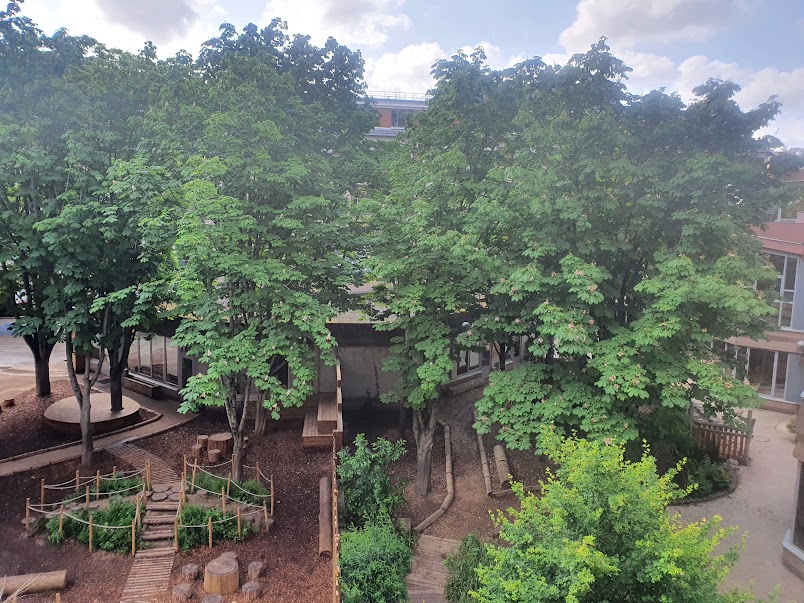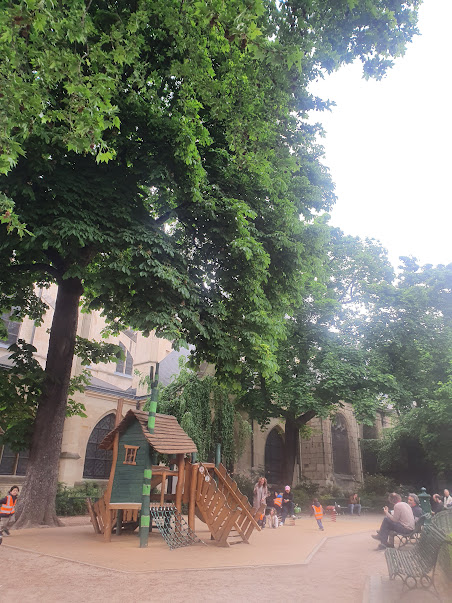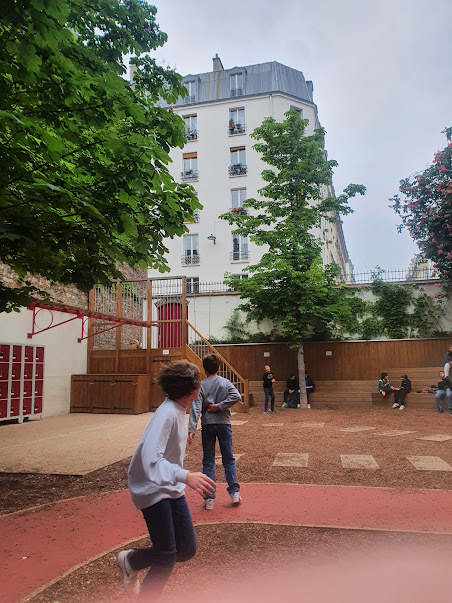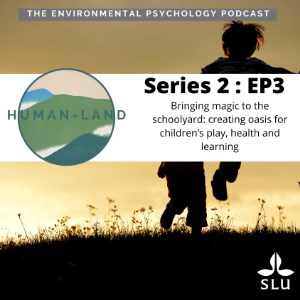This is the third episode of season two. Amanda Gabriel, today´s, host, explores the fascinating world of research and practice about schoolyards for children´s health and wellbeing. Today, we have the privilege of speaking with two remarkable individuals who are at the forefront of this movement. First, we'll hear from Researcher and Associate Professor Märit Jansson, whose work revolves around creating welfare landscapes and promoting sustainable greening of school grounds. Later, we travel to Paris and dive into the Oasis Project, an inspiring project that's transforming schoolyards into vibrant green oases, and joining us for that conversation will be Raphaëlle Thiollier, the dedicated Project Leader of Oasis project.
Schoolyards are more than just physical spaces for children to explore; they are also fertile grounds for cultivating young minds and promoting better opportunities for play. Play is a universal language that children use to make sense of the world around them, and it is through this activity that they develop essential cognitive, social, emotional, and physical skills. In greener schoolyards, research has shown that children engage in imaginative games, collaborate on challenges, and have spontaneous interactions, all of which help them build problem-solving, communication, empathy, and resilience skills. The schoolyard is also a blank canvas for creativity, especially when there are possibilities with simple and open objects like sticks or flower on the grass can inspire imaginative play. By embracing the intrinsic joy of play, schoolyards enrich education and create lasting memories, laying the foundation for a lifelong love of learning and a deep connection to the environment.
Another reason why cities are increasingly turning to schoolyards is to mitigate the impact of climate change. Consequently, there is a growing movement around the world to make urban environments, especially school grounds, greener. This practical and thoughtful approach aims to enhance climate resilience and promote better health and education outcomes.
In this episode, together with Associate Professor Märit Jansson, and with Project Leader Raphaëlle Thiollier from the city of Paris, Amanda Gabriel travels to Paris and visits the project Oasis. Amanda also leads the master course “Outdoor environments for children and youth”. This episode explores:
- How outdoor environments can support children's experiences for their development, wellbeing and health and can support teaching
- The argument that researching play and outdoor environments is important for the development of urban planning for equity to help enable environments where more children feel like they can be active and social
- Valuing free play as a key point for children's health and development, and how the lack of free time is a risk to children’s health and wellbeing

A schoolyard from the Oasis project described in the podcast.

An historical preeschol from the 1930's in Paris that has undergone the Oasis transformation. Teachers have noted more playful behaviour and less conflicts between children.

Teenagers in the highschoolyard transformed by Oasis, in a landscape that promotes physical and social acitivities.





